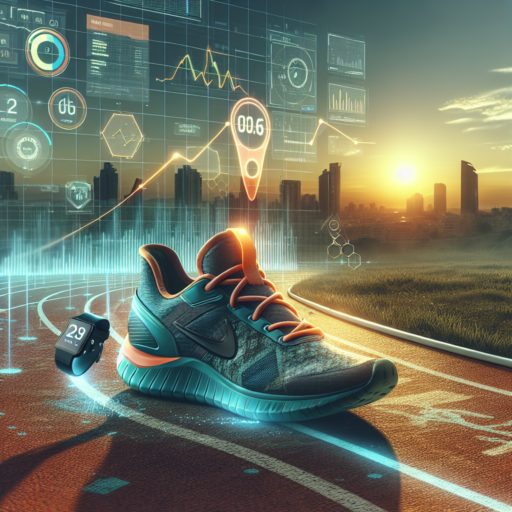Understanding Pace Monitoring: What You Need to Know
Pace monitoring plays a pivotal role in various domains, especially in fitness and health regimes. It involves tracking the speed at which you perform an activity, providing insights into your performance, endurance, and health status. By understanding how to effectively monitor your pace, you can optimize your workouts, ensure safe practice, and set achievable goals that respect your body’s limits and capabilities.
Pace monitoring is more than just a measure of speed; it reflects your body’s efficiency and adaptability to different intensity levels of exercises or tasks. For athletes, it’s a critical factor in training programs, enhanced performance, and injury prevention. In contrast, for fitness enthusiasts or individuals aiming for weight loss, it helps gauge progress, maintain consistency, and avoid overexertion.
Key Benefits of Monitoring Your Pace
- Personalized Training: Tailoring your workout intensity based on your current pace can lead to more personalized and effective training sessions.
- Progress Tracking: Keeping an eye on your pace helps in setting realistic goals and monitoring improvements over time, providing a sense of achievement.
- Injury Prevention: By understanding and respecting your pace, you minimize the risk of pushing your body too hard and suffering from overuse injuries.
Incorporating pace monitoring into your routine requires understanding the tools and metrics relevant to your activities. Whether it’s through wearable technology, mobile applications, or manual calculation, the key is to consistently measure and reflect on your pace to gradually improve your fitness level and health outcomes. This fundamental strategy empowers individuals to make informed decisions about their health and fitness journeys.
The Importance of Pace Monitoring in Training and Exercise
Understanding and implementing pace monitoring in your training and exercise routines is crucial for a multitude of reasons. At its core, pace monitoring helps individuals optimize their workouts, preventing both undertraining and overtraining. This balanced approach is key to achieving long-term fitness goals and improving overall health and performance. By keeping track of your pace, you can ensure that each workout is effective and aligned with your fitness objectives.
Moreover, pace monitoring plays a significant role in injury prevention. Pushing your body beyond its limits can lead to strain and stress injuries, whereas not exerting enough effort can result in minimal fitness gains. Pace monitoring allows you to find that sweet spot where you’re challenging yourself just enough to progress without risking your health. It provides a measurable parameter that can be adjusted as your fitness level improves, ensuring that you continue to achieve growth without plateauing.
Lastly, the psychological benefits of pace monitoring cannot be overstated. Achieving visible progress through measured and consistent improvement in pace can be deeply motivating. It helps individuals set realistic goals and milestones, creating a sense of achievement and encouraging adherence to training programs. This mental engagement is often the key to sticking with an exercise routine long-term, making pace monitoring an invaluable tool in the pursuit of fitness and well-being.
Top Tools and Devices for Effective Pace Monitoring
Keeping track of your pace is crucial for athletes, fitness enthusiasts, and anyone looking to improve their physical performance or health. With technology advancing, the market is now flooded with tools and devices designed to monitor your pace accurately. From wearable tech to mobile apps, understanding the options available can help you select the best tool for your needs.
Wearable Technology
Wearable technology has revolutionized pace monitoring with devices such as fitness trackers and smartwatches leading the charge. These devices not only track your pace in real-time but also offer insights on your overall performance, heart rate, and calories burned. Brands like Garmin, Fitbit, and Apple dominate this space, providing users with detailed analytics to improve their training outcomes. The convenience and advanced features of wearable tech make them a top choice for athletes of all levels.
Mobile Applications
For those who prefer not to wear a device, mobile applications offer an excellent alternative for pace monitoring. Apps such as Strava and MapMyRun utilize the GPS functionality of your smartphone to provide accurate tracking of your pace, distance, and route. These applications often come with social features, allowing you to connect with friends and share your progress. The ease of use and accessibility make mobile apps a popular option among runners and cyclists.
Choosing the right tool or device for effective pace monitoring depends on personal preference, the type of activity, and the level of detail you require for your training. Whether you lean towards the sophisticated analytics of wearable tech or the simplicity and connectivity of mobile apps, the key is to use these tools to stay informed and motivated in achieving your fitness goals.
How to Use Pace Monitoring to Improve Your Workout Results
Integrating pace monitoring into your exercise routine can significantly boost your workout outcomes. Understanding how to utilize pace tracking effectively allows you to optimize your training sessions, making them more efficient and targeted toward achieving your fitness goals. Whether you’re running, cycling, or engaged in any form of cardio, pace monitoring can be your guide to better performance and improved stamina.
Understanding Pace Monitoring
Pace monitoring involves measuring the speed at which you perform your workouts over a set distance. With the help of various fitness gadgets and apps, athletes and fitness enthusiasts can now track their pace in real-time. This immediate feedback helps in maintaining a steady pace, preventing burnout, and ensuring that every part of the workout contributes to overall endurance and strength improvements.
Strategies for Effective Pace Monitoring
- Set Clear Goals: Before starting your workout, define what you aim to achieve with pace monitoring. It could be increasing your speed, endurance, or simply maintaining a consistent pace throughout.
- Choose the Right Tools: Invest in a reliable fitness tracker or app that offers accurate pace measurements and allows you to analyze your performance over time.
- Listen to Your Body: While keeping an eye on your pace is crucial, it’s equally important to listen to your body’s signals. Adjust your pace as needed to avoid overexertion and injury.
By concentrating on pace and incorporating these strategies into your workouts, you can push your limits wisely and achieve better results. Pace monitoring is not just about moving faster but moving smarter, by aligning your body’s capabilities with your fitness goals for optimal performance and health.
Pace Monitoring in Action: Real-World Success Stories
In the world of fitness and performance optimization, pace monitoring has emerged as a pivotal tool for athletes and coaches alike. By providing detailed insights into speed, endurance, and overall performance, this technology is revolutionizing training methodologies and contributing to remarkable achievements in various sports disciplines.
Among the myriad of success stories, a notable example comes from the realm of professional marathon running. Here, athletes have utilized pace monitoring devices to fine-tune their training regimens, resulting in improved consistency and record-breaking race times. By analyzing data collected during long-distance runs, runners have been able to adjust their strategies, optimizing their pace for better endurance and a sprint finish.
In team sports, pace monitoring tells a similar story of transformation. Soccer teams at the top of their leagues have integrated these systems into their training programs, monitoring players’ performance in real-time during matches and training sessions. This approach has not only enhanced individual player endurance but also significantly improved overall team dynamics and strategy on the pitch.
Integrating Pace Monitoring into Your Daily Fitness Routine
Incorporating pace monitoring into your daily fitness routine can significantly enhance your workout effectiveness and efficiency. Understanding the importance of maintaining an optimal speed during exercises can lead to improved cardiovascular health, better endurance, and faster achievement of fitness goals.
One key strategy is to utilize technology to your advantage. The market is flooded with various gadgets and apps designed to track your pace in real-time. These tools often provide instantaneous feedback, allowing you to adjust your speed to stay within your targeted heart rate zone, ensuring that every minute of your workout counts towards your goals.
Another vital aspect is understanding the balance between maintaining a consistent pace and incorporating intervals of speed variation. This approach not only prevents workout monotony but also stimulates different muscular responses, beneficial for overall fitness improvement. A mix of steady-state and high-intensity intervals can maximize fat burning and endurance building.
Pace Monitoring Strategies for Runners: Tips and Tricks
Monitoring your pace while running is vital for improving performance, preventing injuries, and achieving personal bests. With the right strategies, runners can effectively gauge their pace, optimize their training, and push their limits in a healthy manner. We’ll explore a few tips and tricks that can help runners of all levels monitor their pace more efficiently.
Utilize Technology to Your Advantage
In the era of smartphones and smartwatches, leveraging technology is a no-brainer for monitoring your running pace. Devices like GPS watches or fitness trackers can provide real-time feedback on your speed, distance, and heart rate. Apps specifically designed for runners can also help in setting pace goals and tracking progress over time. Making use of this technology can simplify pace monitoring and help in making informed adjustments to your running routine.
Listen to Your Body
While technology is a useful tool, listening to your body remains a timeless strategy for pace monitoring. Pay attention to your breathing, muscle fatigue, and overall exertion levels to gauge if you’re pushing too hard or can afford to increase your pace. Learning to recognize your body’s signals and understanding your limits is crucial for sustained improvement and preventing overtraining.
Implement Interval Training
Integrating interval training into your routine can sharpen your ability to control and adjust your pace. This type of training involves alternating between periods of high and low intensity, which can help improve your aerobic capacity and endurance. By regularly practicing interval runs, you’ll become more adept at adjusting your speed on the fly, a skill that’s invaluable during races or when trying to beat your personal record.
Common Mistakes in Pace Monitoring and How to Avoid Them
Monitoring your pace, whether in running, cycling, or any other form of exercise, is key to achieving optimum performance and avoiding injury. However, common pitfalls often lead athletes, both amateur and professional, to misinterpret their pace, resulting in inefficiency and, at times, setback. Understanding these mistakes is the first step towards avoiding them.
Misinterpreting Pace Data
One of the primary mistakes in pace monitoring is misinterpreting data. Athletes often rely on wearables and apps to track their speed and progress. However, taking these figures at face value without considering variables such as terrain, weather, and personal health on the day can lead to misleading conclusions about one’s performance. To avoid this, complement data with personal intuition and experience, considering how you felt during the activity alongside the hard numbers.
Overemphasis on Pace
Another common error is the overemphasis on pace to the detriment of other essential training metrics. Solely focusing on speed can overshadow critical factors like heart rate, recovery time, and overall consistency. Incorporating a more holistic approach to your training routine, paying attention to a variety of metrics, ensures a balanced and comprehensive view of your fitness and progress.
Ignoring Variances in Daily Performance can significantly impact the effectiveness of your pace monitoring. Daily fluctuations in energy levels, sleep quality, and nutrition can all influence your ability to maintain or improve your pace. Recognizing and adjusting for these variances, rather than pushing through regardless, can prevent burnout and promote steady improvement.
Advanced Pace Monitoring Techniques for Elite Athletes
In the realm of elite sports, maintaining and improving performance is paramount. One innovative method that has gained prominence is Advanced Pace Monitoring. This sophisticated strategy goes beyond traditional tracking, providing insights that allow athletes to optimize their training and performance efficiently. By leveraging the latest in technology and data analysis, elite athletes can now access precise information on their pacing, enabling more customized training programs.
GPS and Wearable Technology
The advent of GPS and wearable technology has transformed how athletes monitor their pace. These devices offer real-time data on speed, distance, and heart rate, among other vital metrics. The precision of GPS technology ensures that athletes and their coaches can closely monitor performance during both training and competitions, adjusting strategies as needed to maintain optimal pace and improve overall endurance and efficiency.
Biomechanical Feedback Systems
Beyond GPS, Biomechanical Feedback Systems have emerged as a cutting-edge tool for pace monitoring. By analyzing an athlete’s movement, these systems provide invaluable insights into the efficiency and effectiveness of their technique. This level of analysis allows for the identification of biomechanical inefficiencies that could be impeding performance, thus enabling targeted improvements. Tailoring training to address these insights helps in enhancing pacing strategies, crucial for sports where even minor adjustments can lead to significant performance gains.
In conclusion, the integration of advanced pace monitoring techniques marks a significant leap forward in sports science, offering elite athletes the tools needed to surpass their performance thresholds. Through the application of GPS technology, wearable devices, and biomechanical analysis, athletes can now access a depth of data previously unavailable. This evolution in training methodology not only enhances performance but also contributes to injury prevention, setting a new standard in athletic training and achievement.
No se han encontrado productos.
Future Trends in Pace Monitoring Technology
The landscape of pace monitoring technology is poised for significant transformation. As we delve into the next generation of devices, a few trends stand out for their potential to redefine how we track and manage physical activity, especially in the realm of professional sports and personal fitness. These advancements promise not only improved accuracy but also a more integrated and personalized experience.
Integration with Smart Devices
The era of standalone pace monitors is gradually giving way to a more interconnected approach. Future technology is expected to seamlessly integrate with a wide array of smart devices. This means your pace monitor could potentially offer real-time feedback on your wristwatch, smartphone, or even smart glasses. The idea is to make pace tracking effortlessly accessible, enabling users to receive instantaneous updates and adjustments based on their performance and environmental conditions.
Enhanced Accuracy through AI and Machine Learning
Accuracy is paramount in pace monitoring, and the introduction of AI and Machine Learning into this sphere is a game-changer. Future pace monitors are poised to use these technologies to analyze patterns, predict outcomes, and provide more precise feedback. This could mean a device that not only tracks your current pace but also suggests adjustments in real-time to optimize your performance. The use of AI could also extend to injury prevention, by identifying when your pace or form may lead to potential issues.
As we look to the future, the application of advanced technologies in pace monitoring devices holds the promise of transforming our approach to fitness and sports performance. These devices will not only become more integrated into our daily lives but also significantly smarter, making our fitness journeys more effective and tailored to our individual needs.




